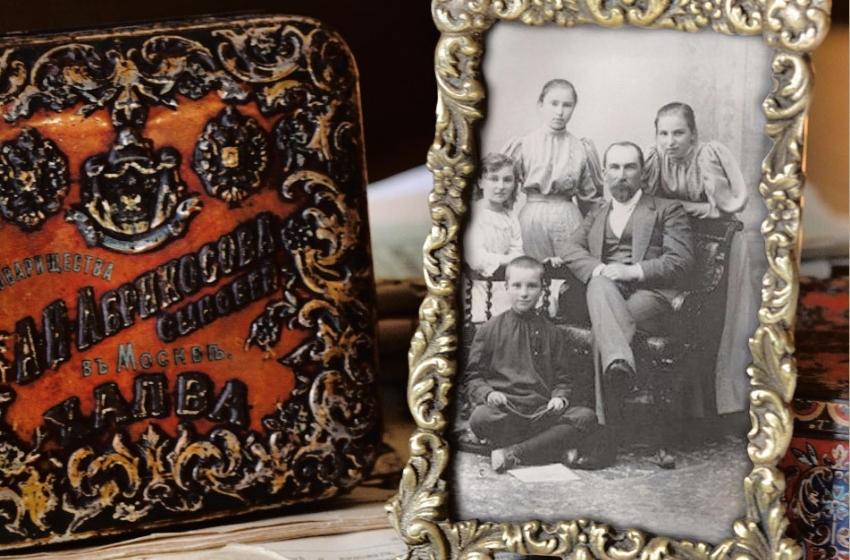From the history of old Odessa Pastry shops. Part 1
Odessa was a city of migrants, with European influences, so the best dishes in Caesar Otton's restaurant could well be accompanied by delicious desserts. Suffice it to say that the American writer Mark Twain, who was in Odessa, praised Odessa ice cream, among other things. In the 1830s in Odessa there were six coffee shops and six pastry shops. According to the informational publication "All Odessa" (1901), there were 11 confectionery shops in Odessa.
Fanconi
15/17, Katerynyns'ka St

Cafe of Swiss Jacob Fanconi was opened in 1872. According to legend, he appeared in Odessa, scared by the persecution of creditors in his homeland. The future chief confectioner of Odessa studied culinary in Warsaw.
A first-class patisserie with anexcellent quality of confectionery, snacks, some foods and alcoholic drinks. There are separate Summer and Winter rooms for the ladies. The cafe is very diligently visited by exquisite public and businessmen. A place where all sorts of news could be found out. Huge billiard room.
Odessa city guide (1914)
There were numerous writers and poets, brokers and aristocrats, during the Civil War. This is the Odessa's record holder by the number of legends and references to it in works of art.
After the death of Jacob Fanconi, the restaurant was inherited by his relative Florian Scoeder.
In the 1920s here was opened the Soviet club of Navy officers, and later the usual canteen. Today, Fanconi restaurant continue the traditions of the pre-revolutionary Fanconi and attracts a numerous of Odessans and guests of the city.
Liebman's cafe

On the corner of Sadovaya and Preobrazhenskaya street, where the Liebman’s house stands, a guardhouse used to be located. After serving nearly seventy years, the commandant’s office was abolished, and the “bureaucracy†gradually began to decline. And the building for several decades has noticeably dilapidated. Debates went on for a long time about what to do with the old guardhouse, and in 1888 it got a new owner - Bernhard Ernestovich Liebman, who bought the building "for demolition."
By that time, Liebman was already a well-known person in Odessa. Hereditary German had the sweetest profession in the world - he was a pastry chef. The hardworking and stubborn Liebman has been saving up for his own business for more than twenty years, working in a candy shop on Alexandrovsky Avenue. Odessa's love of sweets and cakes helped him to make a decent fortune in two decades. And the confectioner fulfilled the dream of his life on a grand scale - to build a chic house and open his own bakery and confectionery there.
Here they took orders for sweets and cakes, but also bake a special bread for patients with diabetes.
In Soviet times, the upper floors, including the attic, were divided into communal apartments. At the lower level were various Soviet institutions. Before the war, there was a Central Savings Bank, during the years of occupation - the Romanian publishing house Bukul, in the 50s - the largest second-hand bookshop.
Confectionery partnership "A. I. Abrikosov & Sons"

In 1880, a factory and trade partnership was established on shares “A.I. Abrikosova Sons â€, which includes, in addition to Alexey Ivanovich Abrikosov, his five sons: Nikolai, Ivan, Vladimir, Georgy, Alexey. The initial capital of the partnership was $2 million rubles.
It was one of the largest confectionery companies in the Republic of Ingushetia in the late 19th - early 20th centuries. Possibly the best candy company in the country. When the management passed into the hands of Ivan Alekseevich, he opened the first retail chain in Russia with brand stores in major cities of Russia.
The Abrikosov family were the first in Russia to create a technology for canning fruits and vegetables, mastered the production of glazed fruits, cough sweets and marshmallows.

At the corner of Deribasovskaya and Yekaterininskaya streets there was a large shop of Abrikosov's sweets. The factory was located in Moscow, but there was a large store in Odessa. The Odessa branch provided work for 20 employees (1912). The annual turnover of the Odessa enterprise was 85 thousand rubles.
In 1919, the Abrikosov confectionery factory (like other private enterprises) was nationalized by the Bolsheviks, and in 1922 it was renamed into the P. Babaev factory.
The total number of pastry shops in Odessa was slightly higher. According to the lists of the last pre-war year (1914), there were 17 of them, some under the name of the owner, and some under the name.
To be continued...



















